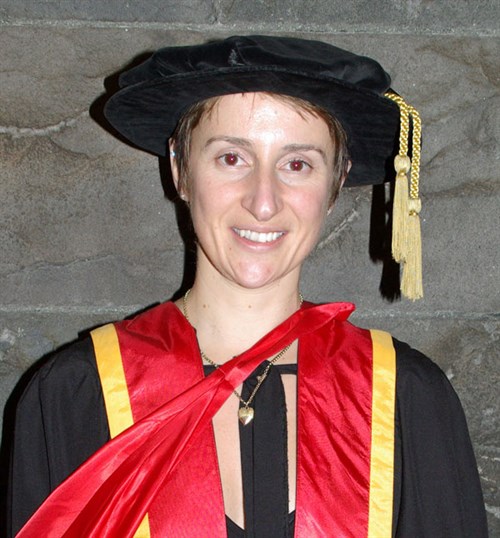First doctoral students – where are they now? (2009)
In 2008, the first students to receive full scholarships from the Maurice Wilkins Centre graduated with their PhDs.
The first to graduate was Dr Catherine Lloyd. Catherine did her PhD at The University of Auckland’s School of Biological Sciences under the supervision of Maurice Wilkins Centre investigators Associate Professor Rod Dunbar and Professor Garth Cooper.
Catherine looked at the interaction between metabolism and the immune system in non-alcoholic fatty liver disease – the most common type of liver disease in the world.
 She identified a protein – MCP-1 – as having a major role in the inflammation of the liver, something that occurs as the disease progresses. Because fatty liver disease can often go undetected for a long time, Catherine suggested that MCP-1 could be used as a marker to test for the disease, or as a target for future drugs.
She identified a protein – MCP-1 – as having a major role in the inflammation of the liver, something that occurs as the disease progresses. Because fatty liver disease can often go undetected for a long time, Catherine suggested that MCP-1 could be used as a marker to test for the disease, or as a target for future drugs.
With her PhD under her belt, Catherine gained a post-doctoral position at the Auckland Bioengineering Institute. Today she translates mathematical models of biological processes into a computer language developed at the institute called CellML.
A large part of her work is focused on making improvements to the online repository of more than 400 CellML models, a role she likens to being a curator at a museum - “except that I’m a curator of a database.” Catherine also helps PhD students who are using CellML to model different cells and metabolic pathways in the human body.
“My PhD was such a personal challenge,” says Catherine, “but it gave me a huge confidence boost. I can now help the engineers here learn more about the biology side of their work.”
Dr Matthew Chung also graduated with a PhD in 2008 following his Maurice Wilkins Centre scholarship. Matthew investigated the structure and function of a protein (SSL11) produced by the bacterium Staphylococcus aureus.
Under the guidance of Mrs Heather Baker and Wilkins Centre investigators Professors Ted Baker and John Fraser, Matthew solved the structure of SSL11 and identified an entirely new mechanism by which these bacteria can evade and disrupt human immune defences. He determined that SSL11 interfered with a key process in the recruitment of white blood cells to the site of infection.
Like Catherine, Matthew has been extremely busy since graduating. He is now working as a postdoctoral fellow in the Biota Structural Biology Laboratory of St. Vincent’s Institute of Medical Research in Melbourne, Australia.
 Matthew’s main focus is on designing new drugs that target cancer cells. Once he knows what a protein looks like and how and where it binds to its target, he then begins to design drugs to block this interaction.
Matthew’s main focus is on designing new drugs that target cancer cells. Once he knows what a protein looks like and how and where it binds to its target, he then begins to design drugs to block this interaction.
“My PhD gave me valuable experience in producing and handling the proteins I’m interested in, which is particularly useful for difficult proteins that don’t like to do what I want them to do!”